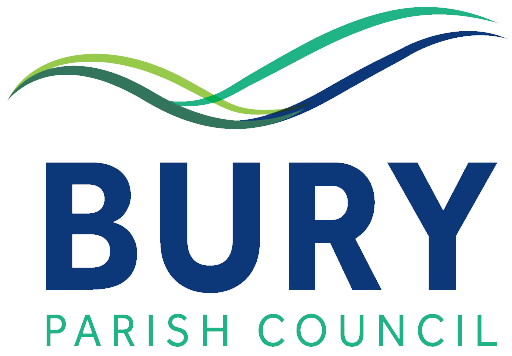Bury in the Past
For those keen to learn more about Bury’s past, the village is fortunate in having several excellent resources, created by parishioners past and present. Lilian E Brown’s All About Bury: A Beautiful Sussex Village, published in 1948, is a delight, a well-researched account of Bury’s past written with affection and charm. It is a rare book now but can occasionally be picked up in old book shops … at a steep price!
To this can be added Bury 1858-1958 – In Living Memory, a photocopied reproduction of a scrapbook written and compiled by members of the Women’s Institute and initiated by the parish council in the 1980s. And finally Through Bury’s Doors, a fascinating collection from parish records and people’s memories, collated and edited by Gwen Squire and published in 2006.
According to the academic work Anglo-Saxon Bury by Matthew De La Pole, although only first recorded in Domesday (1086) as Berie, the village actually has origins as an important royal estate prior to the Norman Conquest (1066). Bury Manor, now occupied by Dorset House Preparatory School, was owned by Countess Godgifu, daughter of Æthelred the Unready (d.1016) and sister to Edward the Confessor (d.1066). After the 1066 Conquest, the Normans handed it over to the Monks of Fécamp, a Benedictine monastic order who went on to farm the Manor for centuries.
Though the status of Bury might well be a result of its political importance as a Hundred site, its function as a port may also have influenced both this and its royal tenure under Godgifu.
Fécamp had been granted estates both at Rye and Steyning before the Conquest because they were important ports during this period. For English based lands to be useful and pro table to the Norman abbey, links to the Continent would have been essential and the bestowment of Bury suggests that it was at least a basic port or landing site for ships in the pre-Norman period.
Bury’s agricultural heritage is still evident today. For hundreds of years the population has been dependent upon agricultural and rural practices and the parish is still surrounded by farmed agricultural land which runs through the heart of the settlements.
The area’s earliest settlements are believed to be from the Bronze Age. The area was colonised by the Romans and evidence of their occupation can be found in the adjacent parish of Bignor with its Roman Villa and the major Roman road, Stane Street, which runs through the parish.
The enclosure of the commons from the late 16th Century and the growth in the size of estates, both aristocratic, ie the Norfolk and Egremont Estates, and gentry families such as Cooke, Upperton and Higgons, saw a parallel decline of small yeoman farmers. The many historic houses are evidence of the growing affluence of the farming community in the early 16th and 17th Century. This was followed by agricultural reform and mechanisation and the introduction of 20th Century technology.
Within the village, Farriers, a private house in The Street was the location of the village’s old forge for many years, while across the road, Penfolds was home to the village’s wheelwright and carpentry family. Other lost village landmarks include the the village stores, now the private house Gargoyles, close to the village crossroads, and the the village’s much-loved pub The Black Dog and Duck in The Street, now also a private residence. The thatched Appletree Cottage at the top of The Hollow still has the well in its garden that once served many of the houses in this part of the village.
Bury Wharf has a fascinating history. For many years busy with goods being transported along the River Arun, it was also the setting of a historic ferry service that for centuries linked the communities of Bury and Amberley. The village’s last ferryman Bob Dudden used to teach the village children to swim in the Arun.
Before motorised transport, three barges, Neptune, Mayflower and Old Sixty-nine were used to bring timber and coal to the village and ‘export’ sand, chalk and lime from the lime works at the foot of Bury Hill. For children’s outings, the barges were cleaned and towed by gaily bedecked horses to the Black Rabbit in Arundel or to Climping on the coast.The watermill which stood close by burned down in 1925.
No-one knows how long the ferry was in existence but it certainly operated for many centuries. The Right of Ferry was held by the Dukes of Norfolk who appointed the ferryman and provided a cottage and boat.
The river was dredged and the embankments built in 1964 to prevent flooding. Prior to this, the land from the churchyard wall to Amberley Castle to the East was often under water.
Bury House in The Street, was the home of the English novelist John Galsworthy for the last seven years of his life early in the 20th Century. He is most famous for his Forsyte Saga novels, following the fortunes of the upper-middle class Forsyte family. Today, Bury House is divided into apartments.

